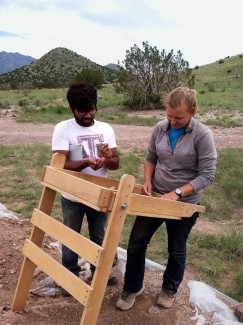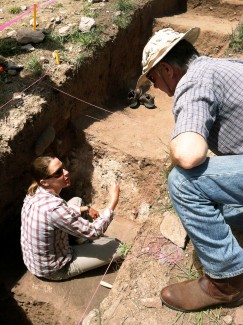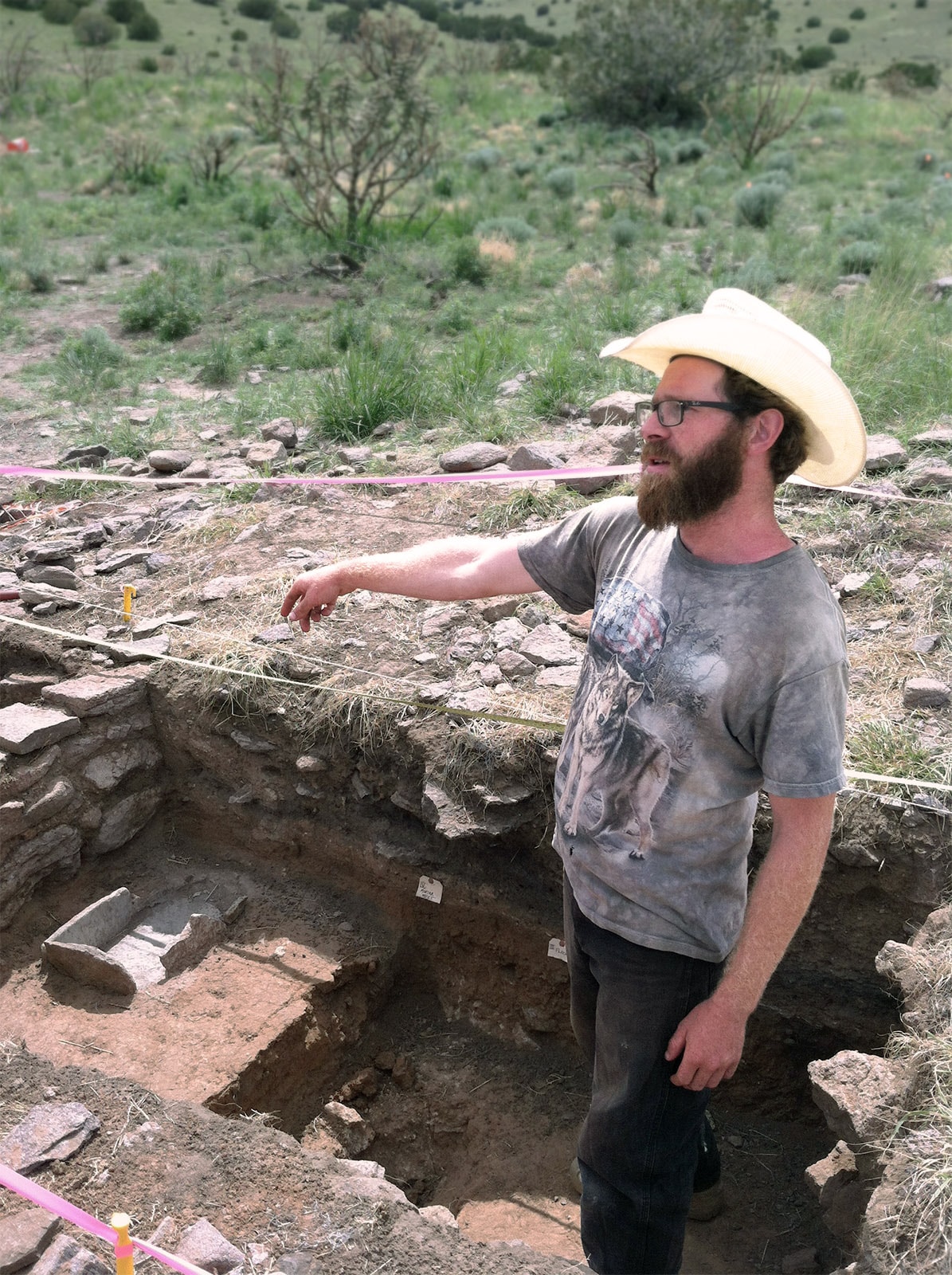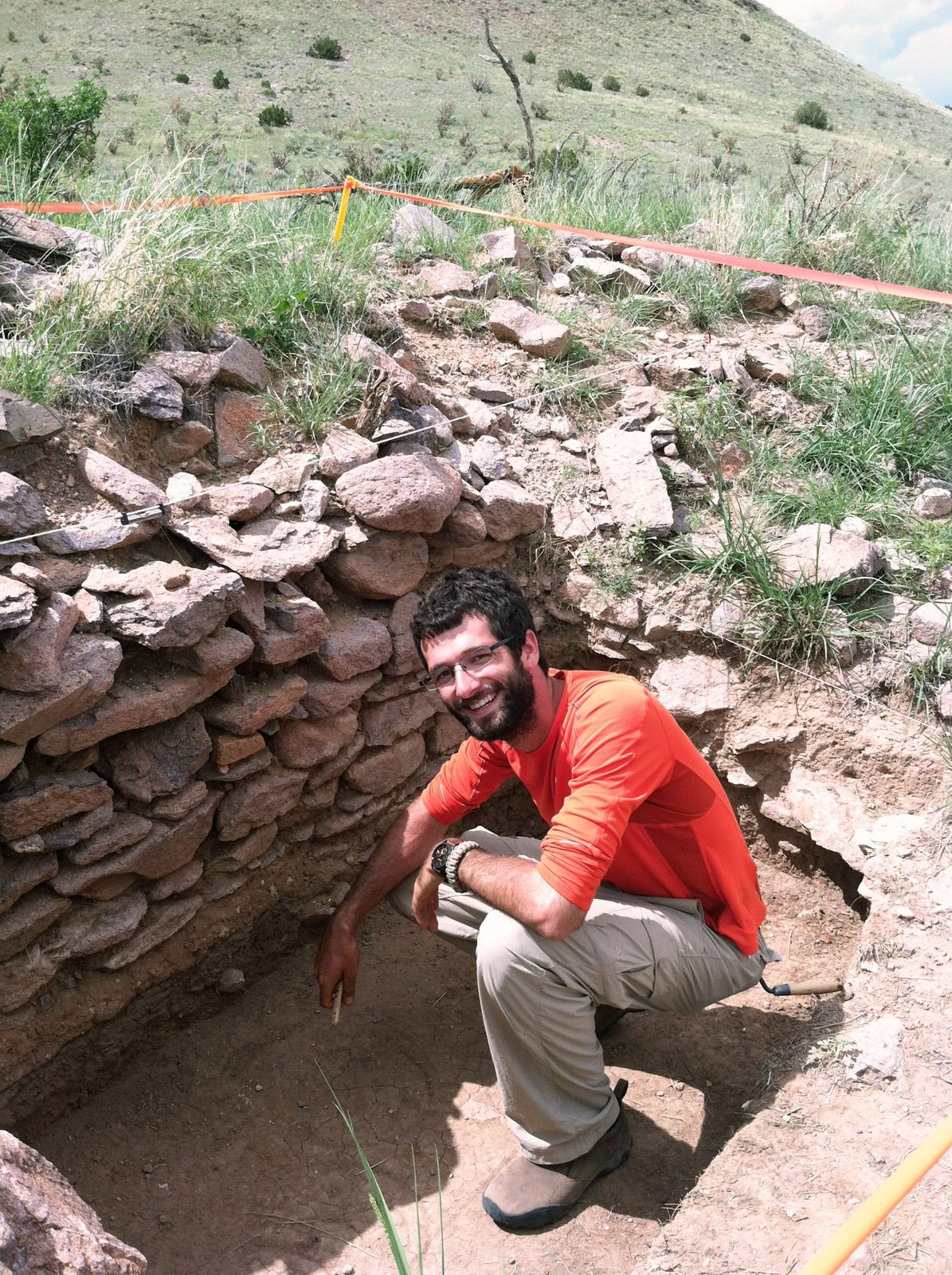- Home
- >
- Preservation Archaeology Blog
- >
- Open Pueblo

On Saturday, August 10, around 100 visitors—including journalists, archaeologists, and local community members—took advantage of relatively cool temperatures and toured excavations in progress at Goat Spring Pueblo. Located in the mountains near Magdalena, New Mexico, on the Cibola National Forest, this ancestral Piro village (also known as Bear Mountain Pueblo) overlooks the southern Rio Grande valley. Through previous work, we know that people inhabited Goat Spring Pueblo at least twice in the centuries between A.D. 1300 and 1680.
During the open house (open pueblo?), students enrolled in Texas A&M University’s summer archaeological field school (which I directed with my friend Suzanne Eckert) talked to visitors about the pueblo’s history and the field session’s key findings. They spoke about their test excavations in two rooms in the pueblo’s south room block, where they found sparse and shallow trash deposits and building styles differing from the village’s north and west room blocks. The varieties of Rio Grande Glaze Ware sherds found in the south room block suggest that people inhabited it first.
The field school crew also exposed portions of two rooms in the north room block. One of these contained a slab lined hearth and a posthole. We placed another unit in the corner of a room that had not been backfilled after the earlier excavations. Here, we found several superimposed plaster floors.

One highlight of our open-pueblo tour was the stop at the large kiva situated near the west and north room blocks. We excavated a test trench in the western portion of the kiva, where an earlier electromagnetic conductivity study had revealed a magnetic anomaly that we expected would be an entry ramp. Excavation revealed that the anomaly was actually the remains of a trench excavated in the 1960s! Fortunately, this trench did not reach to the kiva floor, which we discovered about a meter and a half (about four-and-a-half feet) below the current ground surface. It seems that villagers dug the kiva into the hard caliche layer beneath the pueblo, creating a bench made of caliche but faced with shaped stone masonry. We recovered several wooden beam fragments from the kiva, and we hope that these samples will yield tree-ring dates for the structure’s construction.
Thanks to the support of the town of Magdalena and the staff of the Cibola National Forest, we had a very productive field season. Now we begin the hard work of analyzing the data we recovered, in the hope of answering our questions about the site’s chronology, the village’s economy, and the extent to which the pueblo’s residents were impacted by Spanish colonization.
Explore the News
-
Join Today
Keep up with the latest discoveries in southwestern archaeology. Join today, and receive Archaeology Southwest Magazine, among other member benefits.

